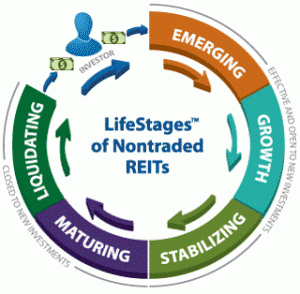First Person: CION’s Michael Reisner on the Enduring Appeal of Alternatives
July 16, 2018 | Beth Glavosek | Blue Vault
Michael A. Reisner serves as Co-Founder, Co-Chief Executive Officer and Co-President of CION Investment Group, LLC as well as CION Investment Corp. (“CIC”), CION Ares Management, LLC and CION Ares Diversified Credit Fund (“CADC”).
|
|
|
Mr. Reisner serves on the investment committee of CIC as well as the Investment Allocation Committee of CADC. He joined CION in 2001. Mr. Reisner was formerly Chief Financial Officer from January 2007 through April 2008. Mr. Reisner was also formerly Executive Vice President — Originations from February 2006 through January 2007. Mr. Reisner was Senior Vice President and General Counsel from January 2004 through January 2006. Mr. Reisner was Vice President and Associate General Counsel from March 2001 until December 2003. Previously, from 1996 to 2001, Mr. Reisner was an attorney in private practice in New York. Mr. Reisner received a J.D., cum laude, from New York Law School and a B.A. from the University of Vermont. |
Alternative investments are typically outside the traditional asset classes such as cash, stocks, or bonds that most retail investors are familiar with. This group of investments can include everything from real estate to credit to private equity. Such holdings can be accessed through various “wrappers” such as real estate investment trusts (REITs), business development companies (BDCs), interval funds and other types of programs.
Alternatives have found favor with advisors and investors for decades now, especially in the 1990s and early 2000s. But, what makes them attractive to investors, and how have they endured the various economic cycles we’ve witnessed since they first became available to the public?
Blue Vault had an opportunity recently to speak with Michael A. Reisner, Co-Founder, Co-Chief Executive Officer and Co-President of CION Investments, to get his perspectives on why alternative investments are still a smart choice for many investors seeking diversification. CION Investments introduced its nontraded BDC in 2012. An industry veteran, Reisner joined CION’s predecessor company in 2001 and served in various roles of increasing importance.
Here are his thoughts on what’s been happening in the alternative investments space during his tenure with CION.
At what point in time do you feel that alternatives really started to gain traction with advisors and investors, and why did they become attractive?
I believe that after the 2008 recession and the corresponding stock market losses, retail investors started looking for options that were less volatile and less correlated to the overall market. Alternatives, when constructed smartly and managed well, can fit that need and provide relatively uncorrelated returns.
In the last few years, we’ve also seen experienced institutional fund managers entering the retail space, which we believe makes alternatives even more attractive, as many of these managers have 15 to 20 years of outperformance while navigating various economic cycles.
What role do you feel that alternatives serve in an investor’s portfolio?
Alternatives can provide a current yield with lower volatility than many traditional investments. Their ability to provide stable current income is particularly attractive for investors. With interest rates having been at or near historical lows for an extended period of time, traditional income-based investments such as investment grade corporate or municipal bonds haven’t provided the current income that many investors need. Alternatives, as a complement, can fill that void.
What hurdles in the past have alternatives faced?
Alternatives traditionally offered to the retail channel have suffered from high fees, sizable front-end loads, and a lack of transparency surrounding fund values. In addition, although there should be a price for illiquidity in terms of returns, many investors, following the 2008 recession wanted their investment returned to them. Unfortunately, many managers during this time suspended their tender offer plans and/or delayed liquidity events, which has led to an abundance of regulations limiting exposure to alternatives in some portfolios. Fortunately, certain new products have been able to address these issues with features such as lower fees, multiple share classes (including ones with no front-end loads), daily NAV, and tenders at NAV that can never be suspended.
As an industry, what are some of the myths or misperceptions that linger about alternatives?
There is a lingering misperception that alternatives are riskier and are only appropriate for investors in small doses. Of course, it depends on the structure and the manager, but the mere fact that these products are semi-liquid in and of itself does not make them riskier and does not necessarily warrant a hard limitation on them for certain investors. Investors in interval funds, for example, should know that they can always get out of a fund at NAV over time, and they don’t need to wait for the manager to cause a liquidity event. Additionally, they don’t have to worry that the tender offer program will be suspended, as some were in the past.
How is the industry continuing to innovate to address investor concerns?
For one, the lowering of front-end fees and advisory fees has been a positive change to address concerns that alternatives are too expensive. The implementation of daily NAV products has given investors insight into the worth of their investment, which addresses the issue of transparency. With the continuously offered products, managers are not reliant on conforming to any one liquidity event, so they have the latitude to put forth their preferred strategies. Also, as mentioned, the number of high quality managers entering the space should be encouraging to investors, as they have a demonstrated track record of performance.
Are there particular sectors you feel are especially strong right now?
CION Investments is focused on the credit market, so of course, we feel somewhat biased that private credit is attractive right now, particularly directly originated senior secured credit that has a short duration. It’s an asset class that institutions continue to gravitate toward with the latest 2018 H1 Preqin report showing that 98% of surveyed institutional private debt investors plan to increase or maintain their allocation over the long term. It’s also an asset class that retail investors now have access to after years of only being available in the institutional space. The need for private credit has been amplified as a result of the global banking system shrinking. Banks have changed the way they look at lending, and they’re much more reluctant now to hold loans on their balance sheets. To the extent that banks are competing, they are looking to originate loans and then syndicate them. So, syndicating and trading is much more of their focus than actual lending. Specialty finance managers have the opportunity to step in and fill that void, both here and in Europe.
Speaking of CION, CION Investments currently sponsors both a BDC and an Interval Fund. Can you explain the differences between the two programs’ strategies?
BDCs must have at least 70% of their assets invested in U.S. middle market companies, and our BDC currently has a much higher percentage than that. Middle market is defined differently by managers, but most use the S&P definition, which is companies that have an EBITDA of $50 million and less. The median EBITDA of the companies in our BDC is approximately $54 million. The U.S. middle market is a large and vital part of both the American and global economy, yet in the wake of the credit crisis, there has been an abundance of middle market firms facing difficulty obtaining the financing needed to run their businesses. BDCs like ours fill that void, but because of the primary focus on the U.S. middle market, I view it more as a sector-specific strategy. As we get later in the credit cycle, sector-specific strategies should be complemented with core strategies.
Our Interval Fund, which is a ’40 Act fund, is much more of a core holding, rather than a sector-specific fund like the BDC. It currently focuses primarily on short duration, floating rate senior secured loans, but not just in the middle market and not just in the U.S. It’s a diversified pool of global credit that the portfolio managers dynamically allocate to the best relative value opportunities in different market environments. The fund can invest in a portfolio of directly originated loans, secured floating and fixed rate syndicated loans, corporate bonds, asset-backed securities, commercial real estate loans, and CLO debt and equity, both in the U.S. and Europe.
About CION Investments
CION is leveling the playing field of investing by building better fund structures with true partnerships at the core, giving investors direct access to premier asset management historically only available to the largest institutions so they can expect more for their portfolio.
We currently manage CION Investment Corporation, a leading non-traded BDC with approximately $1.8 billion in assets under management and sponsor, through CION Ares Management, LLC, CION Ares Diversified Credit Fund, a continuously offered interval fund that seeks to provide superior risk-adjusted returns across various market cycles by investing in a globally diversified portfolio of liquid and illiquid credit asset classes.
Visit cioninvestments.com to learn more.

Learn more about CION Investment Group on the Blue Vault Sponsor Focus page












